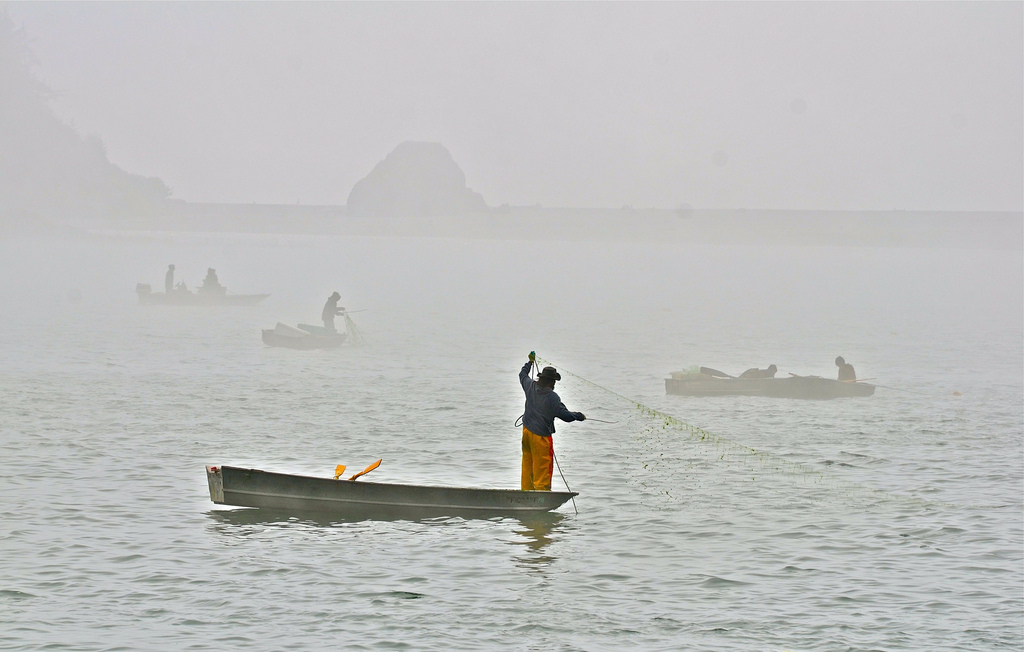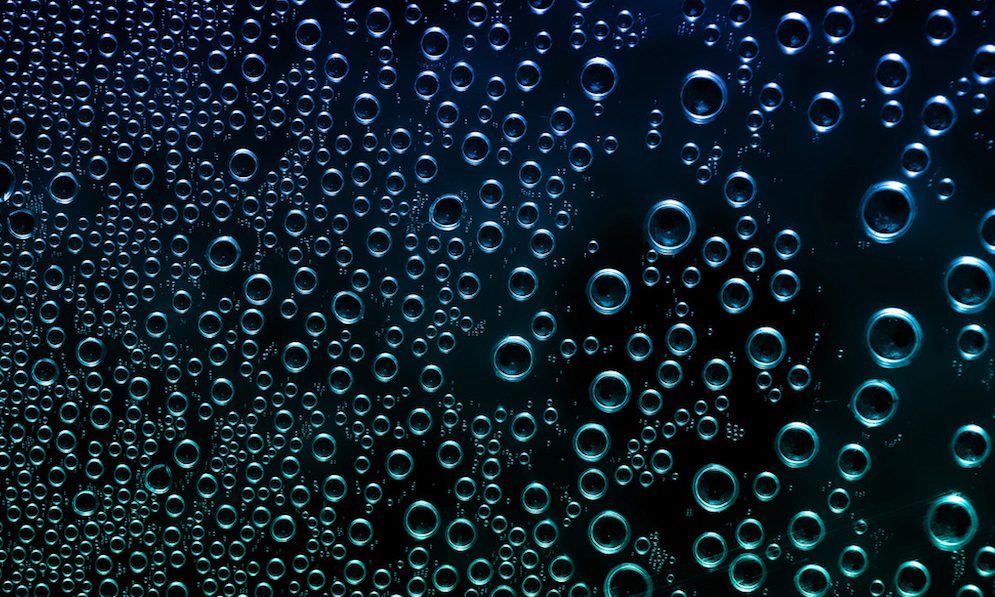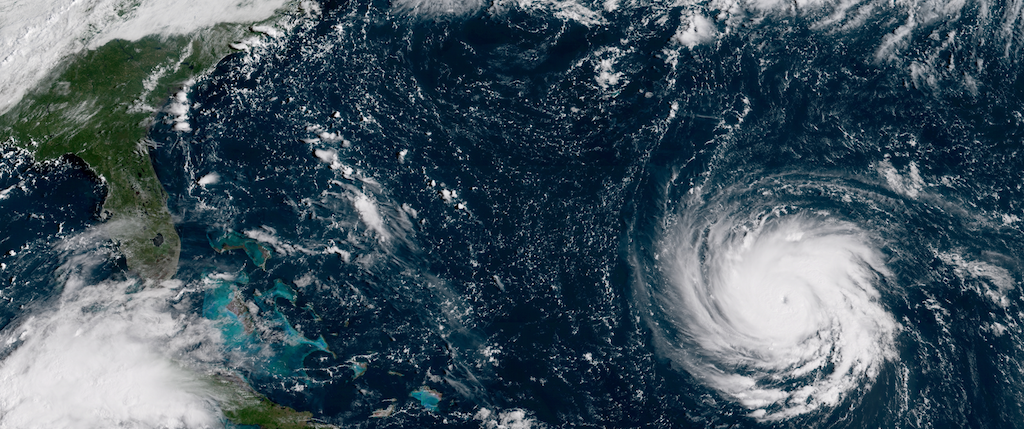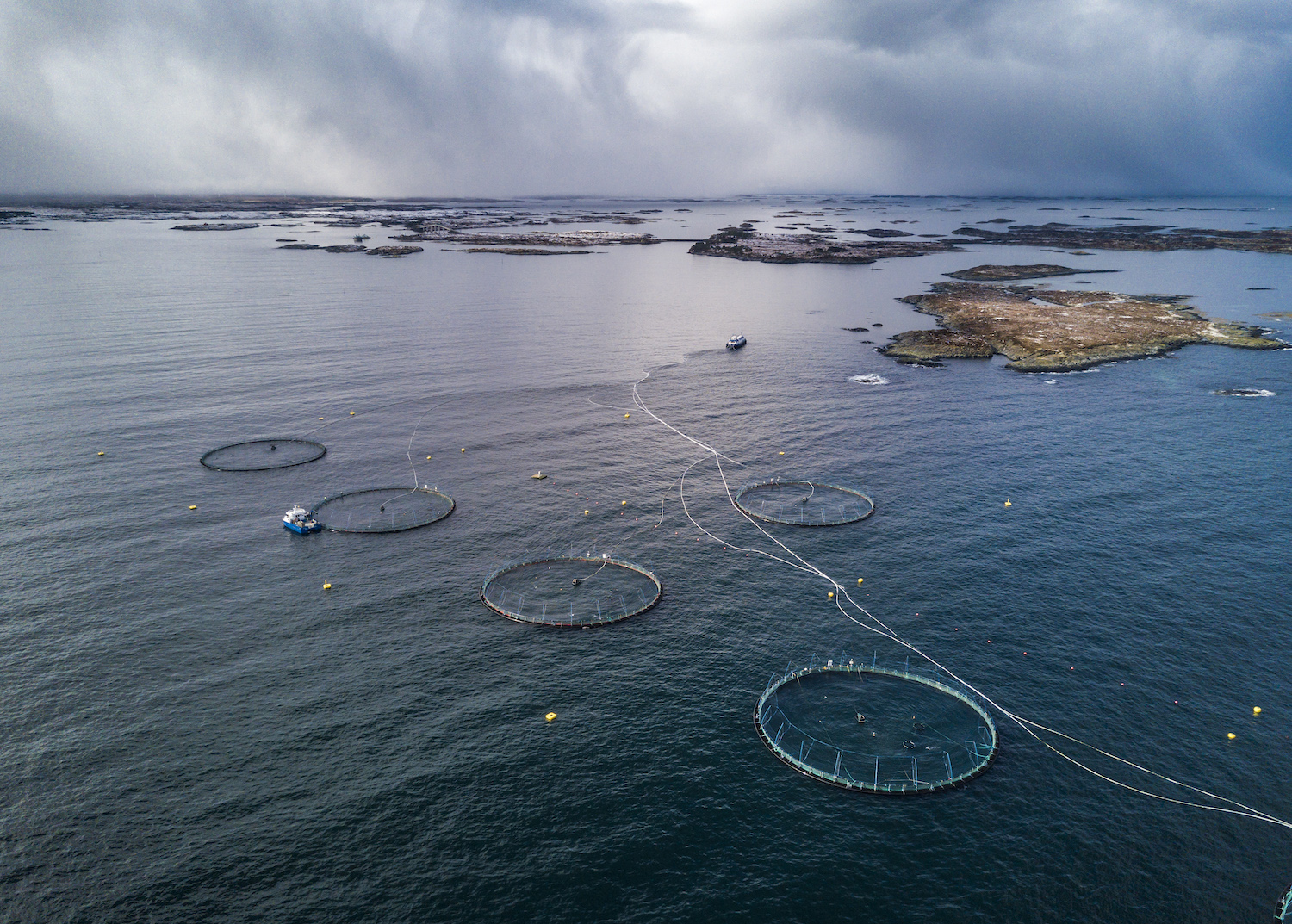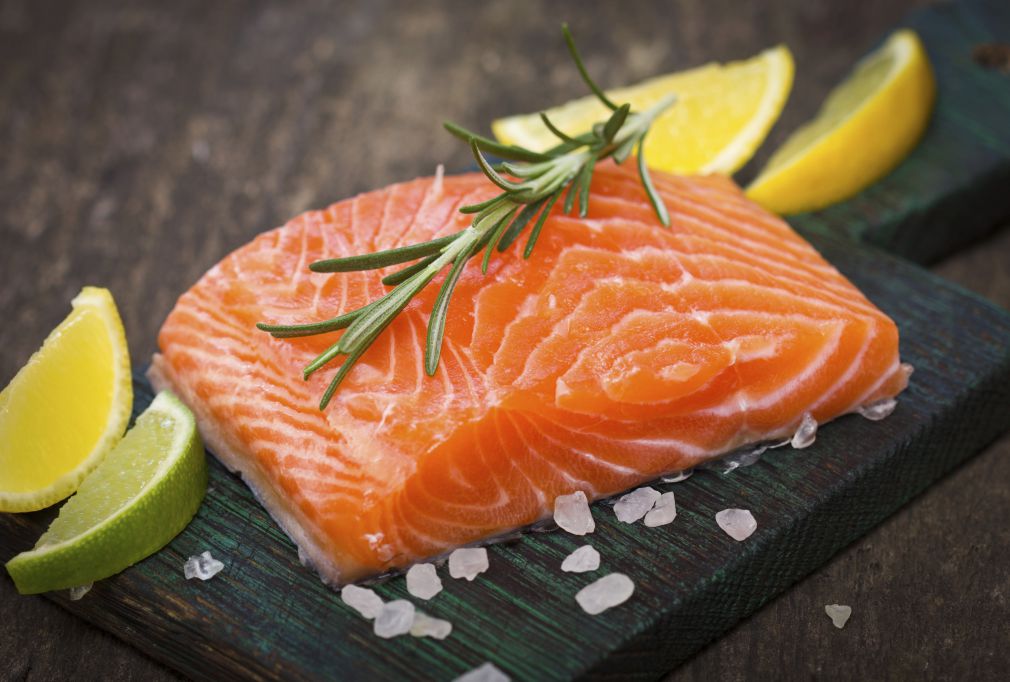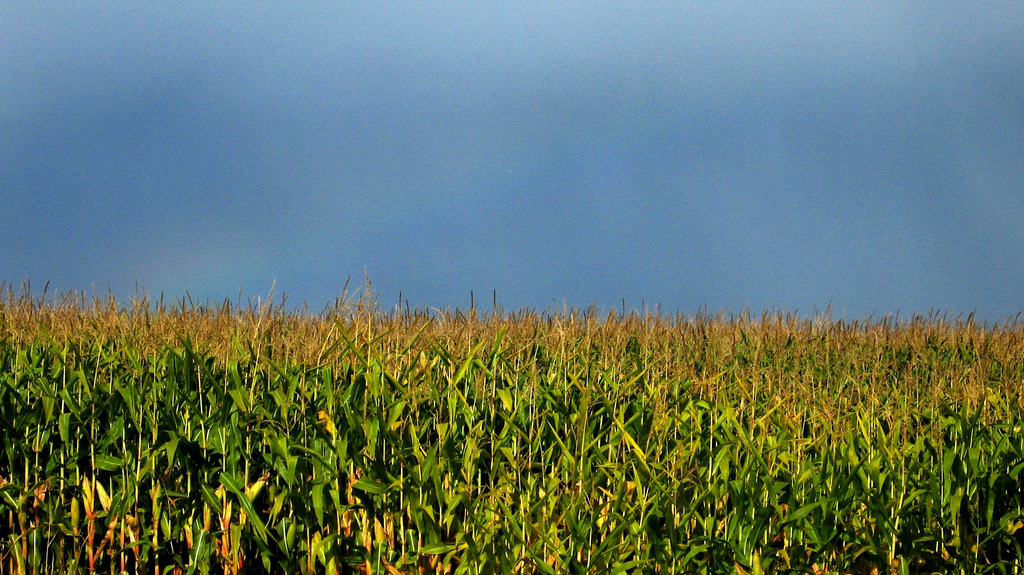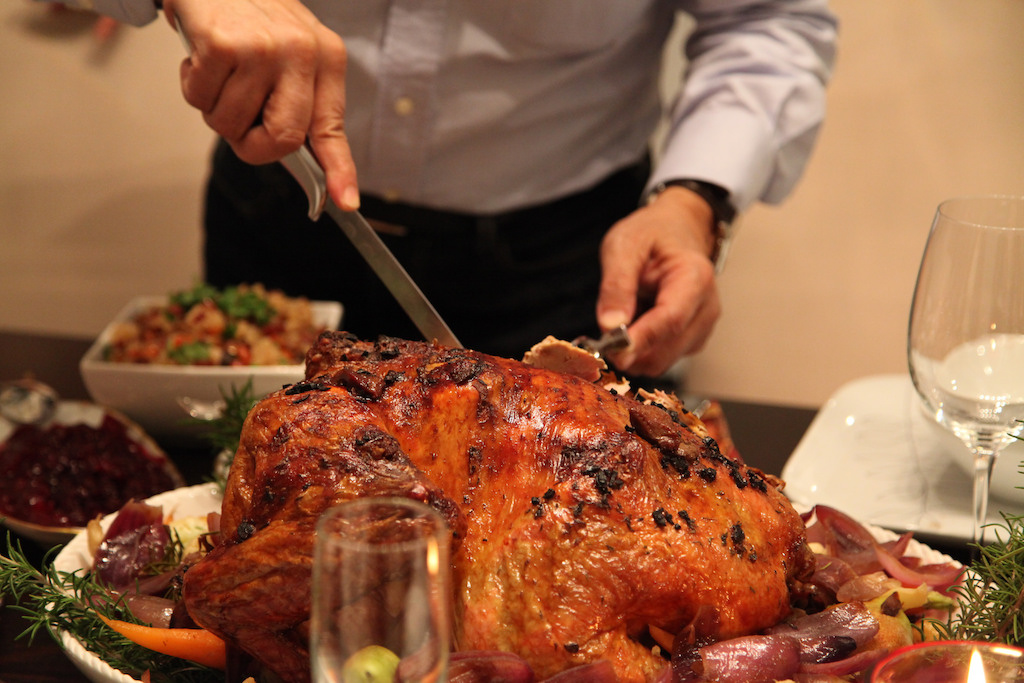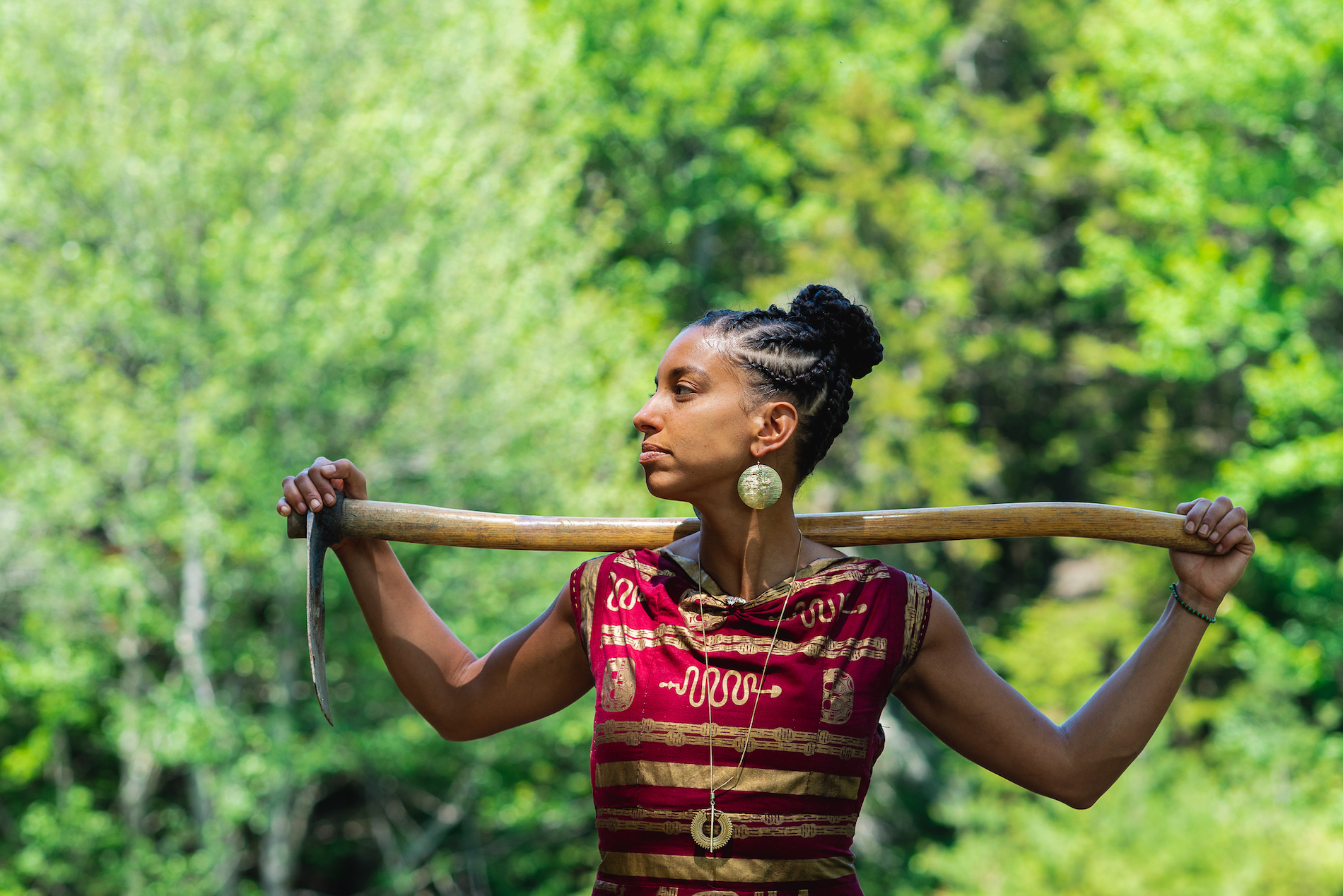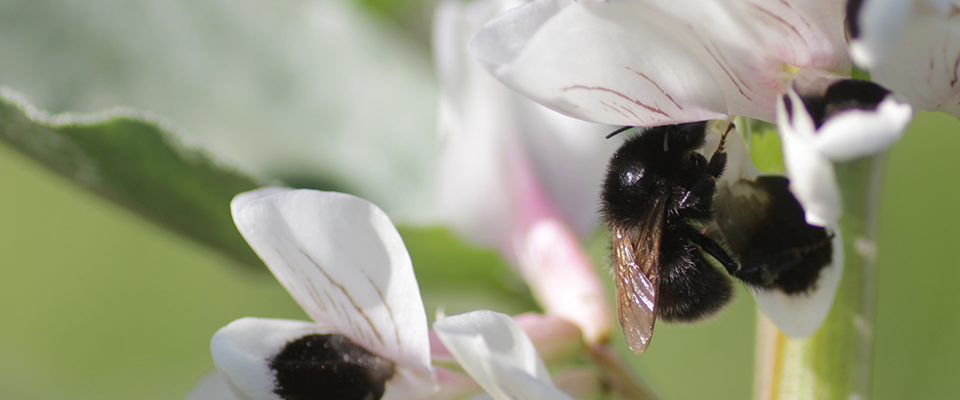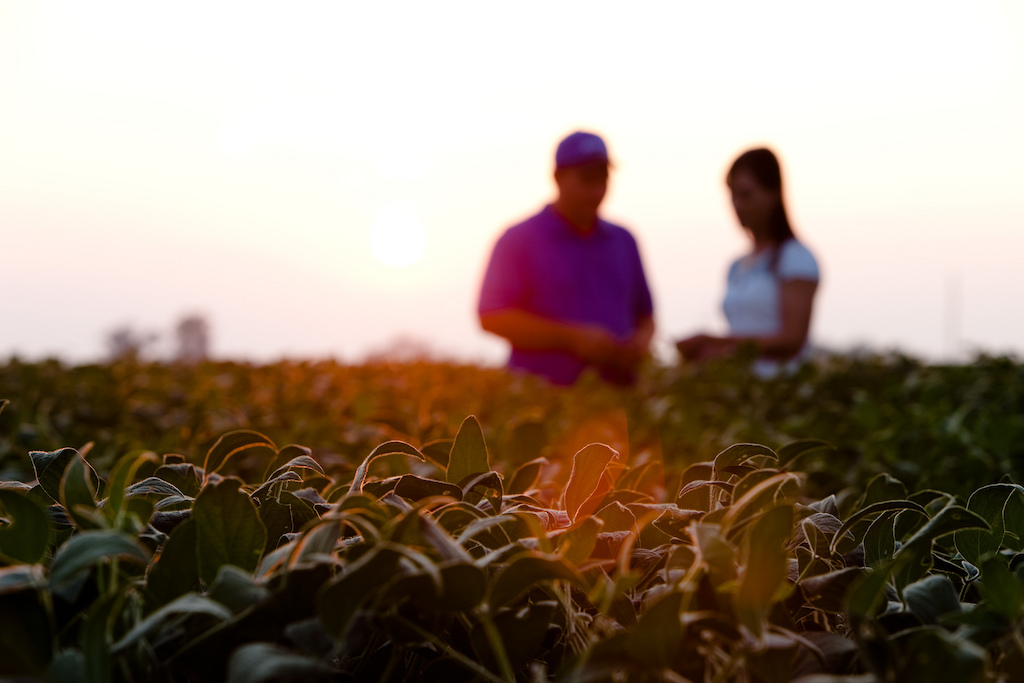Every year in August, the Yurok Tribe of Northern California hosts a salmon festival. Though there’s live music, games, and a parade, the real draw is the food: Salmon from the Klamath River, cooked on redwood stakes over a long fire pit. From the outside, this year’s salmon festival looked a lot like those before it, but there was one key difference. For the first time since 2015, the salmon actually came from the Klamath River—instead of being imported from Alaska.
Like many tribes in the Pacific Northwest, the Yurok had to fight hard to gain the fishing rights granted to them by government treaties generations ago. The so-called “fish wars” or “fish-ins” (in the style of Civil Rights lunch counter protests) pitted the tribes against police, the United States Fish and Wildlife Service (UFWS), and other government agencies, until the courts finally decreed during the 1970s that Native Americans be allowed to fish the rivers as they had for thousands of years. Yet within a few decades, people began to realize that just because they had the right to fish didn’t mean there would be fish in the river. Decades of mismanagement, damming, and over-allocation of water had decimated the fish stocks.
The Klamath is an unusual waterway, one that has often been referred to as “upside down.” It begins in the high desert, where it picks up nutrients from the shallow lakebeds that feed it and from farms surrounding the Upper Klamath Basin. It’s a warm and polluted river, with blue-green algae at its source, and its water gets cleaner and wilder the closer it gets to the ocean.
The Klamath’s problems are more than a century old. In 1906, the Klamath Reclamation Project began draining swampland and lakes to build an agricultural industry out of deserts and marshes. Within a few decades, the first dams were built along the Klamath—none of them with fish ladders—and stocks began to dwindle. By the end of the century, the Klamath and other wetlands were irrigating 1,400 farms in the area, leaving little water left for the fish. In 1996, the dissipation got so bad that Coho salmon, which once coursed through the Klamath, were listed as a threatened species.
And it got worse. In 2002, the river was hit with a fish kill that wiped out over 34,000 adult salmon within just a few weeks. By 2005, they became officially endangered, after the population fell to as little as 1 percent of historic levels.
The Klamath River runs for 230 miles, stretching from Oregon to the California coast. For 44 miles, the Yurok Reservation mimics the river’s snake-like shape
The low water levels have allowed deadly parasites like C. shasta to thrive, while also making the water warmer, which creates the perfect environment for toxic algae to bloom. Today, as much as 80 percent of the area’s wetlands have disappeared.
The Chinook salmon population has been so decimated that the Tribe voluntarily stopped commercial fishing. “In Yurok Country, two years without a commercial fishing season has an impact that is similar to a plant shutting down in a one-company town,” Yurok chairman Thomas P. O’Rourke, Sr. said in a press release last year. “We are doing everything in our power to find ways to help our people to supplement their lost income. We have people who haven’t been able to catch up on bills for two years.”
“As long as we can keep hope alive that the river can be fixed, we never want to say it’s dead,” Gensaw says. But over the last decade, it has clung to life through a series of injunctions and legal arguments that both demanded more water for the fish, and the removal of dams along the Klamath once and for all. “My son doesn’t know what it’s like not to rally and protest for water,” Gensaw says. He grew up like she grew up, in the midst of hearings, logging statements, and talking to reporters about why the river and the fish matter. “There’s no alternative. What would I do—go to another river? I live 13 miles from my parents on the river, a mile from the same village where my husband’s family lived for generations,” Gensaw says. “It’s our grocery store and playground and now the place has become contaminated.” Their only choice is to stay and fight to make it better.
* * *
In 1945, Billy Frank, Jr. was 14 years old—and was trying to stay hidden. He pulled his canoe behind a fallen maple tree and began to collect the writhing Steelhead and Dog salmon from the 50-foot net he’d set in the river the night before. He was butchering the fish when the game wardens came to arrest him. As Trova Heffernan wrote in Where the Salmon Run, Frank told the wardens, “Leave me alone, goddamn it. I fish here. I live here!” But the teenager was taken into custody anyway. That arrest was the first of 50 he collected throughout his life for “illegal” fishing on his ancestral river, and it made him one of the major voices in the so-called Fish Wars to come.
When Washington was established as a territory in the 1850s, the government signed a treaty with multiple tribes. On paper it doesn’t look like it was a very good deal—2.5 million acres of tribal land traded for three paltry reservations, $32,500, and the right to fish at “all usual and accustomed grounds and stations … in common with citizens of the territory.” Without that last clause, many tribes would have refused to sign at all. Like so many who lived in the watery Pacific Northwest or along rivers further south, salmon and fishing were at the center of their culture.
For nearly a century, fishing rights were a non-issue. White settlers were more interested in timber and mining than in fishing, and the fish were so abundant that it seemed like there was more than enough to go around, anyway. That all changed in the mid-1900s, when the logging industry and an increase in development began to harm the health of salmon populations and game fishing became a popular pastime. Native fishing rights were slowly stripped away in every West Coast state. There were restrictions on out-of-season fishing and crackdowns on net fishing in rivers (which specifically impacted Native fishers), as well as requirements for Native fishers to follow the same licensing rules as sports fishermen, and bans on commercial fishing.
According to an article in the Pacific Historical Review, written by historian Donald Parman, Native Americans weren’t just arrested when they left the reservations to hunt or fish, they were arrested on their own land, too. In Washington, the Department of Game and Fish expressed intense support for the Sportsmen’s Council—the recreational fishing lobby—and both frequently blamed local tribes for overfishing problems (despite the fact that a report in 1940 had found Native fishing to have a negligible influence on salmon levels).
Photographed here, the Yurok Tribe wraps up commercial fishing operations for 2014
Having few other options for food and finances, as well the conviction that treaty law was on their side, most tribal populations continued to fish as they always had—just with more secrecy. An arrest meant fines, jail time, loss and/or confiscation of fishing equipment, and even the loss of their fishing boats. With each new arrest for illegal fishing, people got more frustrated and more political. When Swinomish Indian Joe McCoy was arrested for illegal fishing in 1960, over 100 people packed into the courtroom, Trove Heffernan wrote. But the Washington State Supreme Court ruled against him, which allowed the state greater leeway in regulating tribal fishing. The situation had been tense before, but after McCoy, the fuse was lit.
A few years later, the first official fish-ins began. In January of 1964, activists from local tribes gathered at Frank’s Landing along the Nisqually River, put their boats into the water, and undertook the most basic daily chore—they fished—in an act of civil disobedience. It was a peaceful demonstration that ended in their arrest. Yet tempers outside the tribes still flared. An assistant Pierce County prosecutor at the time said, “We had the power and force to exterminate these people from the face of the earth, instead of making treaties with them. Perhaps we should have! …We certainly wouldn’t be having all this trouble with them today.”
Finally, in September of 1970, after years of court injunctions and protests, the Fish Wars came to a head. Tacoma police arrested 59 protesters, using tear gas and clubs, and “Indians were beaten and brutally manhandled,” according to a 1999 article about the incident that appeared in The Seattle Times. Local police arrived and ordered the protestors, who had been encamped along the shore all summer, to disperse—about 80 men, women, and children in total. They refused to leave. “Police stormed the camp, shots were fired, clubs flailed, tribal members were thrown to the ground. Others ran, fearing for their lives,” wrote a reporter for The Seattle Times in an article that looked back on the protests 40 years later. Ramona Bennett, now a Puyallup elder, described seeing agents on the bridge, firing down at them so closely that they could see bullets going by. “I thought I was shot dead; somebody pointed a gun at me, and pulled the trigger, but it was a gas canister,” Bennett said.
Near the Klamath River, similar protests took place in 1978 and 1979. “Something happened every day,” Yurok Tribe member Diane Bowers told California TV station KCET. Cars might drive by with bumper stickers reading, “Can an Indian and save a salmon.” At one point, a group of Yurok were having a birthday by the river when agents arrived and pulled out their billy clubs. Bowers said, “So you’re thinking in your head ‘I’m gonna die. We’re all gonna die right here and nobody will ever know the truth about the story.’”
Justice Stevens, delivering the Court’s opinion, wrote, “Because the Indians had always exercised the right to meet their subsistence and commercial needs by taking fish from treaty area waters, they would be unlikely to perceive a “reservation” of that right as merely the chance, shared with millions of other citizens, occasionally to dip their nets into the territorial waters.”
The precedent set by the Boldt decision and the Supreme Court ruling established that tribal fishing rights should not only include a 50-percent share of the fish, but also that the habitats should be protected so that there will continue to be fish in those waterways in the future.
* * *
“Everything that can go wrong with western water law has gone wrong in the Klamath,” says Glen Spain, Northwest regional director for the Pacific Coast Federation of Fishermen. “It starts in an arid region. The snowpacks have been minimal because of climate change and we have a situation where more and more water has been promised and there’s no way to say no.” As Mark Twain famously said, “Whiskey is for drinking and water is for fighting over.”
Klamath Tribes have been rallying for dam removals for the past two decades. Thanks to a delay in Congressional approval, dam removal plans didn’t become official until a few years ago
While farmers were once at the top of the water-rights food chain, acknowledgement of the importance of tribal fishing rights and requirements regarding endangered fish habitat have put further pressure on the resource. In 2001, a drought sapped the West Coast; Washington, Oregon, and Idaho all declared drought emergencies. The Klamath Basin was hit especially hard. But for the first time in 94 years, the Federal Bureau of Reclamation severely curtailed the amount of watering going to Klamath farms, arguing that tribes and salmon took precedence over agricultural interests.
That time, farmers were the ones protesting. They opened canal gates to allow more water to flow to their farms, brought bulldozers to the irrigation canals as though they were about to redirect the water to their farms themselves, and populated their fields with signs that read, “Federally Created Disaster Area” or “No Water, No Barley, No Beer.”
The Bureau finally diverted water to farmers in early 2002, and it was that action that many blamed for the fish kills that followed a few months later. Since then, the Klamath Tribes have been in a constant state of litigation for more water and further protections for the river’s fish. Generally speaking, though, the fish are winning. In May of this year, a federal judge ruled that the Bureau of Reclamation had to follow a previous ruling, one that required water otherwise planned for agriculture to be diverted in order to flush out parasites that linger in shallow, warm water. Just a few weeks later, the Tribes filed a new lawsuit under the Endangered Species Act to improve water quality in the Upper Klamath Lake.
The Klamath Tribes had been talking about dam removal in 2000, but the fish kills brought the idea back to the fore. Thanks to a delay in Congressional approval, dam removal plans didn’t become official until a few years ago. While the initial plans agreed on by all stakeholders included water-sharing with farmers and fish, as well as habitat restoration, the one moving forward leaves ranchers “without a reliable source of irrigation water,” according to an opinion piece in The Los Angeles Times. In 2017, the article noted, the Upper Klamath farm country was “already studded with ‘for sale’ signs.”
“Twenty years ago, dam removal was a crazy idea,” Gensaw says of the Klamath. “Now we’ve seen other rivers go through it and it’s not a fairy tale idea anymore.” In fact, the current plan is for four dams along the river to be removed by 2021.
Tribes won the right to fish but now they have to keep fighting to make sure the river is healthy
“This will be the largest dam removal in U.S. history,” says Michael Belchik, senior water policy analyst for the Yurok Tribe. In the meantime, the Tribes are continuing to do what they can to make sure salmon populations don’t plummet even further.
While many have looked at the Klamath situation in terms of “Ranchers vs. Indians” or “Farmers vs. Fishers,” those involved find that assessment reductive. “If anyone is to blame it’s government water managers—not water users,” Fisher says. “People built a livelihood around a certain allocation that is not sustainable.”
Unfortunately, as Spain notes, “No bill in Congress can create more water.” And without enough to go around, someone will have to go with less.
Tribes won the right to fish but now they have to keep fighting to make sure the river is healthy. The Boldt decision and other cases have made that work more likely, but not any easier. “There’s always something new that’s threatened, whether it’s marine life or river life or up in the High Country,” Gensaw says.
Gensaw is now one of many generations of Yurok who have protested on behalf of the fish and the Klamath. “My hope would be that my kids won’t have to rally and protest for water and trees and sacred sites,” she says. Though the protests are less charged now than they were in the 1970s, it’s still frustrating and exhausting never to be relieved from trying to convince counties, states, and neighbors of the importance of these rights. “That would be ideal,” Gensaw says, speaking of the possibility of a break. “But the reality and the way I’m raising my children is that we speak up for the things that can’t speak up for themselves,” Gensaw says. “That’s a powerful thing for them to learn in their life—being Native and brown and growing up in this day and age where those things aren’t favorable.”
Despite her own passion for the river, Gensaw says she’s still in awe of how committed everyone is to the cause. “When I put out the call for people to catch a 3 a.m. bus and go to San Francisco or Sacramento or Portland, march and scream for three hours, then get back on a bus and come back home, I’ve never been let down.”
